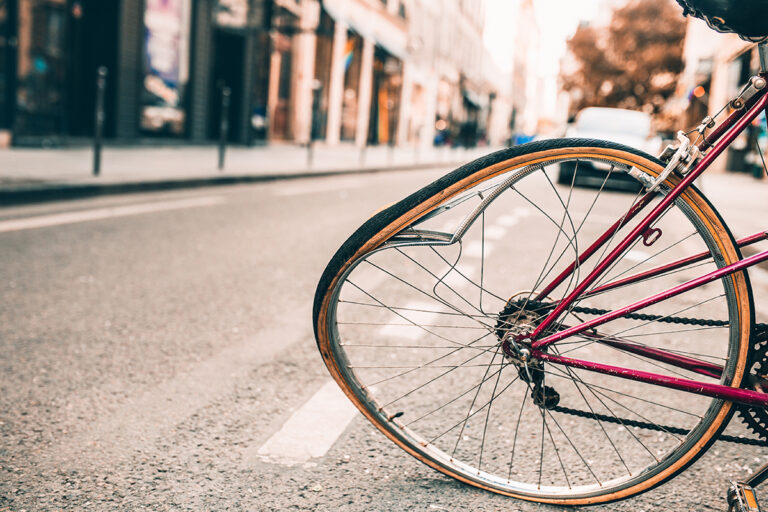Spokane cyclist Bradley Bleck shares his personal story about recovering from hip replacement.
I broke the head of my femur crashing on the third lap of the Coeur d’Alene cyclocross race, in Fall 2021. Dismounting my bike to run down an embankment, I tripped and went down like a sack of potatoes. The pain was immense.
As the EMT put it, “like having your arm ripped off.” Only worse. If ever there was a “Your Mileage May Vary” story on injury recovery, this is it. Not only that, but this is a “glass half full” look at my recovery.
Surgery Recovery Begins
The day after my injury I had a bionic hip installed. Two days later I was home, struggling to navigate the seven steps that confined me to the bedroom and bathroom. Arriving home signaled the beginning of my recovery.
Told to keep all weight off my leg for eight weeks, my recovery regimen consisted of painfully moving my left foot to the floor, hoisting myself up with the walker, hobbling to the bathroom, doing my thing, hobbling back, then painfully lifting my leg back on the bed before collapsing exhausted. Thank goodness for the “trucker’s toilet” that kept these trips to a minimum.
Over the next few weeks, I moved from the walker to crutches, adding the kitchen and living room to my ambles, braving those seven steps, but still returning exhausted to bed.
6 Weeks into Recovery
I’d had enough of inaction. I braved the stairs (13 of them each way!) to the basement so I could ride my indoor bike. After the stairs, the hardest part was getting on the bike.
The first ride lasted 15 minutes. The second, 22. The third, 30. I pedaled with minimal resistance, but it was something other than lying in bed or sitting in a chair.
The next week, I began rowing workouts, beginning with 10 minutes and slowly extending the time.

Week 8
At week eight, the surgeon had me putting weight on my leg. One-fourth my body weight the first week, then half the next week, then three-quarters, and finally 100 percent.
That was when I started walking around the neighborhood. The walks started short and grew to 3 miles. There was discomfort, but no pain.
Week 13
With week 13, I began a Zwift fitness program to get ready to ride outdoors. Here the loss of fitness and strength was quantified. The numbers are not definitive, but my cycling FTP (functional threshold power) dropped from 244 watts to 196. From not much to a good bit less.
On Strava, I had a fitness score of 74 just before my accident. It was 17 when I began riding again. As of this writing (April 2022), that score is up to 40, and my FTP is at 214. Progress.
Also during week 13, though maybe something I should have begun earlier, I added hip exercises and yoga. I followed each indoor ride with either 15–20 minutes of yoga and hip exercises or 20–30 minutes on the rowing machine.
The yoga was basic: front planks, side planks, bridge pose, bird dog, and reclining leg lifts that could someday become Anantasana. The exercises were hip flexions, abductions, and extensions without resistance bands. The poses were initially 10 seconds per pose, then 15, 20, and 30 seconds.
Each week I increased the number of sets from one to two to three to four. I’ve since added resistance bands to the exercises.
The payoff to all of this was a ride with friends along the Snake River. We rode 50 flat miles, half with a headwind. It was not fast, but the sun was out, the sky was clear, and I was on my bike.
But in terms of recovering from hip replacement, it’s only just begun.
Originally published as “From Cyclocross Racing to a Hip Replacement” in the May-June 2022 print issue.
Health & Fitness story sponsored by:

Find more injury-recovery stories and Health & Fitness column articles.













